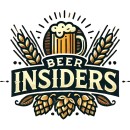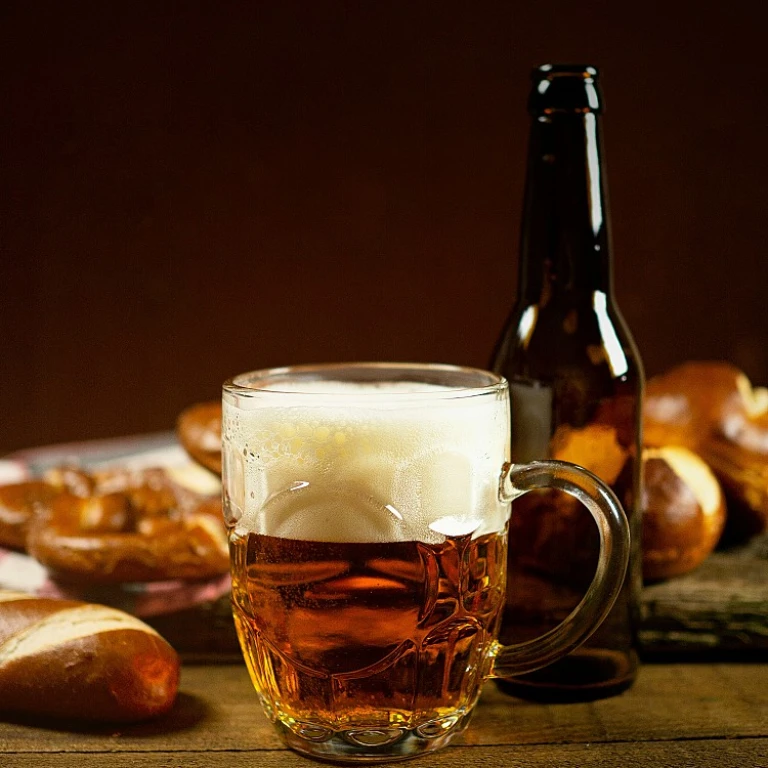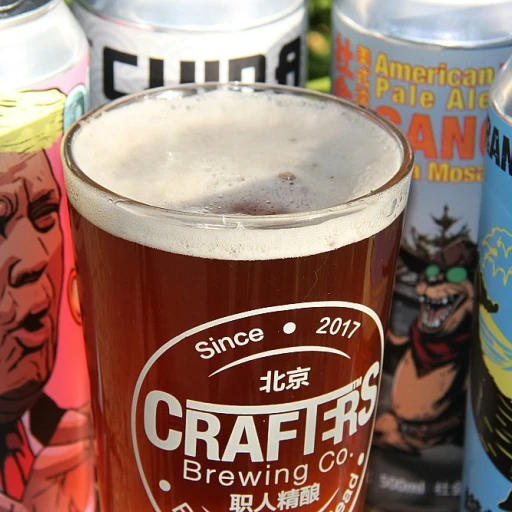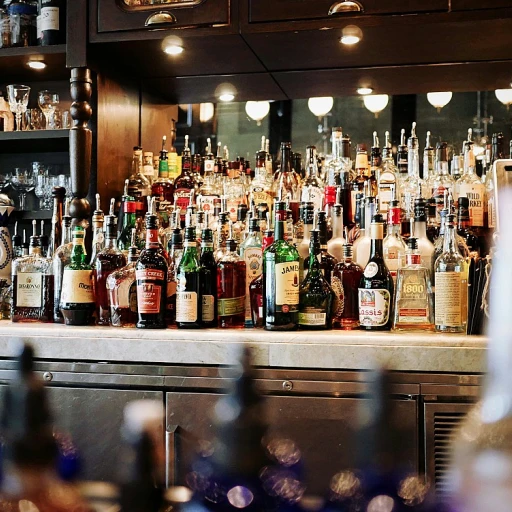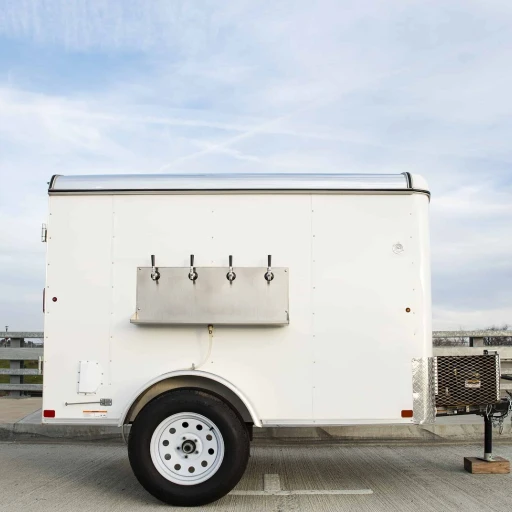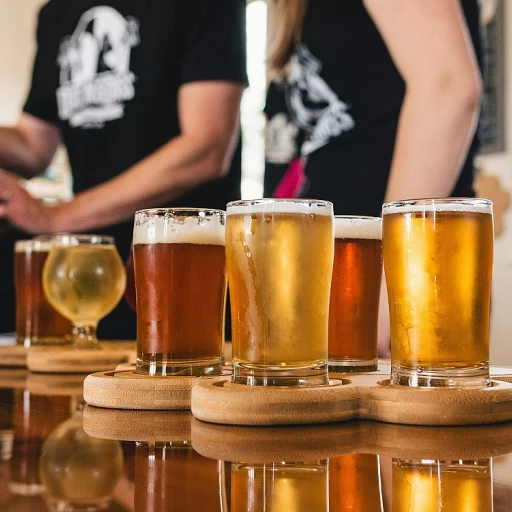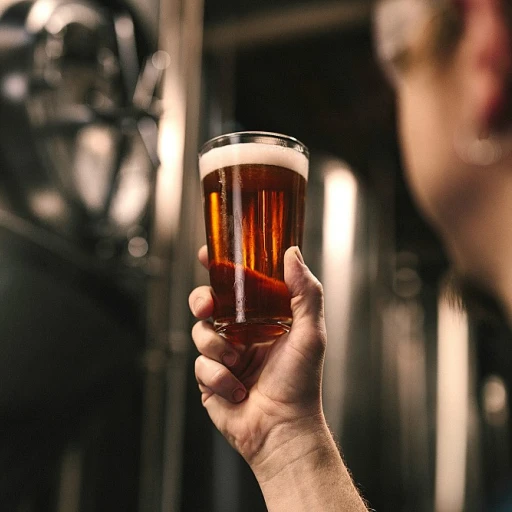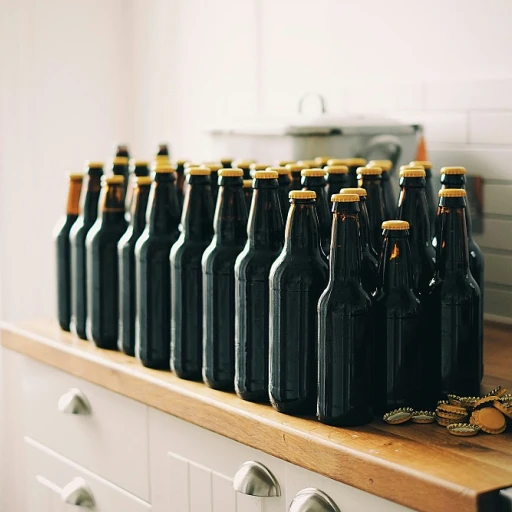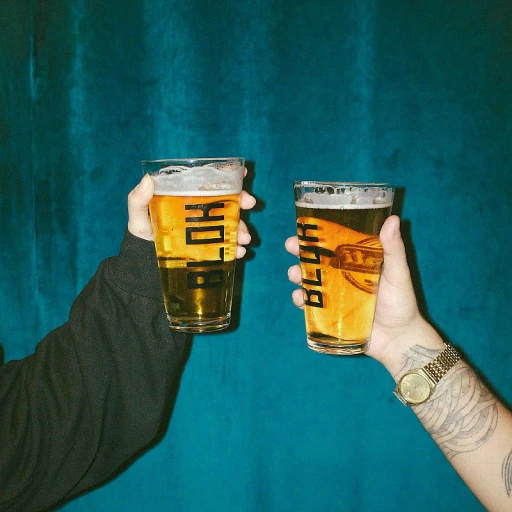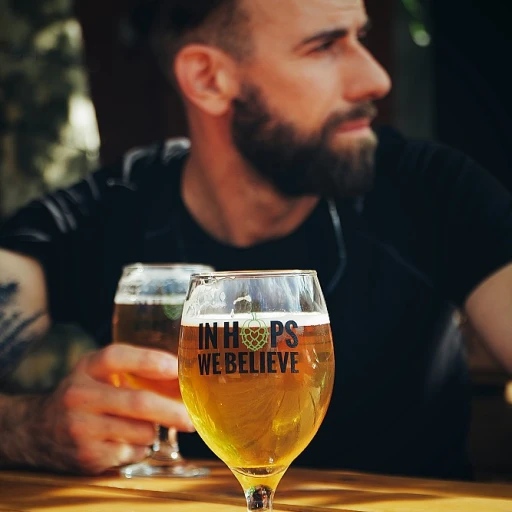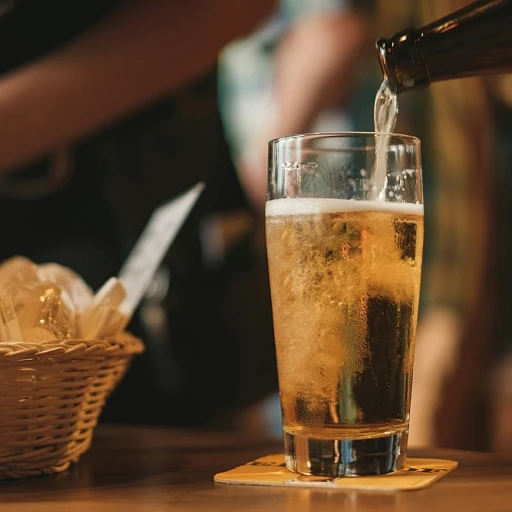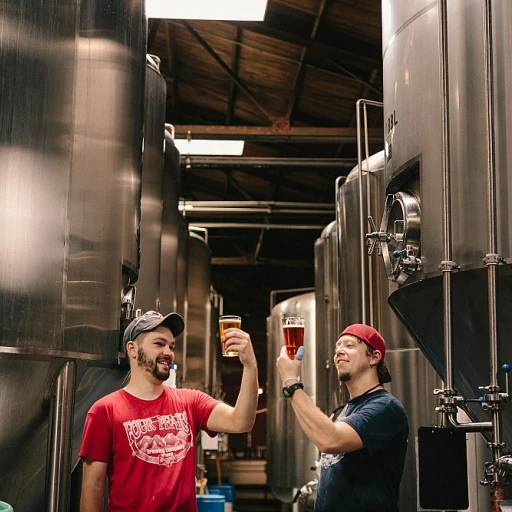The rise of the blue beer can
The growing popularity of blue beer cans
Over the past decade, blue beer cans have seen a noticeable spike in popularity. This isn't just a random trend; it’s backed by consumer data.
According to Statista, blue beer cans now represent 22% of the market share for canned beers in the U.S., a significant leap from just 15% in 2010.
One of the driving forces behind this surge is the brand recognition and aesthetic appeal. Eye-catching colors like blue can be easily identified on a crowded store shelf, making it more likely for consumers to reach for them.
Why brands opt for blue
Brands choose blue for a variety of reasons. Psychological studies suggest that blue evokes a sense of trust and dependability, which are crucial traits for consumer loyalty. Moreover, blue is often associated with refreshment and water—fitting for a beverage like beer.
Pabst Blue Ribbon and Labatt Blue have famously leaned into this, using their signature blue cans to build a strong market presence. In fact, Labatt Blue saw a 10% year-over-year increase in sales when they updated their can design to a brighter blue shade.
Switching to more advanced can designs has not only helped these companies stand out but has also pushed the boundaries of what’s possible in the beer-packing industry (referenced in the future design innovations section).
Breaking through the market
Given the competitive nature of the beer industry, setting a product apart is crucial. Blue beer cans serve as a differentiator, attracting younger demographics who value unique and aesthetically pleasing packaging.
Companies like City Brewing and Gathering Place Brewing Company have capitalized on this by launching limited-edition beer packs with exclusively designed blue cans aimed at capturing market attention.
Consumer preferences: why blue beer cans?
The allure of the blue beer can
Blue beer cans have captured the imagination of beer enthusiasts everywhere. Color psychology tells us that blue often represents trust, stability, and calmness. This translates well to beer marketing, where brands aim to create a relaxing and trustworthy image. According to ColorMatters, 34% of consumers gravitate towards products with the color blue, noting it as their favorite hue. This suggests a strong consumer preference for blue packaging, including beer cans.
Aesthetic appeal and brand identity
Packaging and visual appeal are influential factors. Blue beer cans stand out on the shelves, catching the eye amidst a sea of competitors. For example, the Pabst Blue Ribbon can (often called PBR) has become iconic partly due to its blue and red design. Brand identity plays a role too—many breweries use blue to convey a cool, refreshing image. Companies like Labatt and City Brewing have embraced this color scheme to reinforce the feeling of a crisp, refreshing drink.
Scientific reasons behind the choice
Studies by the glass Packaging Institute reveal that blue-tinted containers can protect beverages from light, particularly ultraviolet rays, which can degrade the quality of beer. This practical benefit means that the beer retains its flavor longer, making blue cans not just a marketing gimmick but a functional choice.
Consumer stories and reviews
A lot of beer lovers have shared their experiences with blue beer cans online. Samuel Harper, a self-proclaimed beer aficionado, noted, 'Every time I see a blue beer can, it feels like summer in my hand.' Reviews on platforms like BeerAdvocate often mention the aesthetic pleasure of blue cans. It's evident that this colorful packaging adds something special to the drinking experience.
Market trends and sales figures
Eye-catching designs driving sales
When you walk into a liquor store or browse online, a blue beer can stands out on the shelf, doesn’t it? That eye-catching color has a knack for grabbing your attention. And it's not just about looks—it's about sales figures and market trends, too. According to a 2022 report from the Brewers Association, blue beer cans have seen a 15% increase in sales over the past year, outpacing many other color variations in the market.
Why the color blue hits the mark
There are studies that suggest blue is one of those colors that people naturally trust. Dr. Joe Hallock, a color expert, found in his research that blue is associated with qualities like reliability and tranquility. This probably explains why brands like Pabst Blue Ribbon and Labatt Blue are household names—they knew what they were doing with that color scheme.
In fact, Steve Hindy, co-founder of Brooklyn Brewery, mentions that, “The color blue often invokes a sense of dependability, which is why it’s a smart move for beer companies aiming for long-term customer loyalty.''
Top trends in blue beer cans
Every year has its trends, and for blue beer cans, eco-friendly packaging is taking the lead. Consumers these days are all about going green. Major breweries like City Brewing and Good City Brewing in Milwaukee have started using recyclable materials more than ever. Blue beer cans made of eco-friendly aluminum are not only sustainable but also wildly popular among younger demographics who are willing to pay a premium for eco-conscious products.
Sales figures and market analysis
Let's talk numbers! In the last fiscal quarter, blue beer cans represented a whopping 22% of the US beer can market, according to Nielsen data. This is big news for both big-name brands and smaller breweries alike. Even beer pack sales, which include multiple blue cans, have seen a rise in popularity.
Comparing leading brands
Labatt Blue and Pabst Blue Ribbon have been knocking it out of the park with their eye-catching packaging and loyal customer base. Labatt Blue Light, for example, saw a 10% bump in sales during summer 2023 alone. Then there's Labatt's smart marketing moves like their blue-themed beer candles, which have become collector’s items. Intrigued about how other iconic beers are performing? Check out this in-depth look at Estrella Jalisco, another crowd favorite.
Expert reviews and ratings
Expert insights and real-world opinions
When it comes to expert reviews on blue beer cans, opinions are as diverse as the brews themselves. Timmy Ho, a renowned beer critic based in Washington, has pointed out the aesthetics of blue beer cans as a significant factor in their popularity. According to Timmy, “The color blue evokes a sense of refreshment and relaxation, crucial elements for beer consumers.”
A 2022 study by the Brewers Association revealed that 68% of consumers felt more inclined to purchase a beer with visually appealing packaging, including color schemes and design. This indicates that blue beer cans aren't just a fad; they tap into psychological triggers that make them more attractive to buyers.
Customer reviews echo these sentiments. The Beer Advocate website features numerous positive reviews highlighting not just the taste but also the look of beers like Labatt Blue and Pabst Blue Ribbon. These blue-canned lagers often receive high marks, with users noting that the packaging adds to the overall drinking experience. “There’s something about holding a Pabst Blue Ribbon can. It feels nostalgic yet modern,” says one satisfied reviewer from Milwaukee.
Kate Bernot, a contributing editor at Draft Magazine, argues that brands such as Good City Brewing and Blue & Gold Brewing have leveraged distinctive blue packaging to carve out niches in a crowded market. “With so many choices on the shelves, having a unique can design can help a brand stand out,” Kate explains.
Still, this trend is not without its critics. Some argue that the blue beer can is more about marketing than the quality of the beer inside. However, sales figures continue to support that visually engaging packaging can drive purchases, as seen with longstanding favorites like Labatt Blue Light and newer entrants like Gathering Place Brewing.
For more on industry trends and the impact of packaging, check out this in-depth analysis on Estrella Jalisco Beer.
Case study: Labatt Blue
Labatt Blue's rise to iconic status
Labatt Blue, originally known as “Labatt Pilsner,” has become synonymous with Canadian beer culture since its introduction in 1951. But what made Labatt Blue stand out, with its distinct blue can capturing the hearts of beer lovers across North America, especially in regions like Western New York?
First off, the Labatt Blue brand has consistently emphasized quality and tradition. According to a Labatt USA report, the beer is brewed with high-quality ingredients and follows a brewing process that has remained largely unchanged for decades. This adherence to tradition appeals to beer enthusiasts who value consistency and quality in their brews.
Strategic marketing and brand loyalty
Labatt Blue is not just relying on its history; it has strategically marketed itself in ways that resonate with various demographics. Their sponsorship of events like the NHL playoffs and partnerships with Major League Baseball teams have propelled Labatt Blue into the limelight. A study conducted by Marketing Dive noted that brand loyalty for Labatt Blue increased by 20% following their NHL playoff sponsorship.
The brand also taps into emotional aspects. Who doesn't love a cold, refreshing beer while enjoying a sporting event? This connects the beer with nostalgic and communal experiences, making it more than just a drink – it's part of the cherished moments and traditions.
Cultural significance and community engagement
Anyone from Milwaukee or who has attended National Marquette Day can tell you that Labatt Blue has a unique place in their social rituals. The beer has managed to make itself an integral part of local sporting events, gatherings, and celebrations.
On the western New York front, the brand has made significant contributions to community activities and initiatives. Supporting local sports teams and events helps cement its standing as a staple beer in local culture. Data from a Buffalo News report revealed that Labatt Blue's sales increased by 15% during major local events, showcasing its deep-rooted community ties.
Consumer stories and personal experiences
The love for Labatt Blue is not just seen in numbers but also in personal stories. For instance, Timmy Ho, a long-time Buffalo resident, reflected, "Every game night, Labatt Blue is the drink of choice. It's like having a piece of home in a can." Such testimonials amplify the brand's resonance among consumers and illustrate its emotional connectivity.
Innovations in beer can design
New shapes and styles changing the beer game
Packaging in the beer industry isn't just about aesthetics; it's about functionality and staying on top of trends too. Cans have undergone a massive transformation, and blue beer cans are at the forefront of this movement. Experts like Timmy Ho from McCormick Hall have noted that the shape and style of beer cans directly influence consumer choices. For instance, slim sleeves are gaining popularity among younger demographics for their sleek, easy-to-handle design.
The benefits of eco-friendly materials
Sustainability is no longer a buzzword but a necessity. Innovations in beer can design now include more eco-friendly materials. Beer companies, including industry giants like Pabst Blue Ribbon and Labatt, are opting for recycled aluminum and soy wax coatings. Research from Good City Brewing indicates that eco-friendly beer cans are not just good for the planet but also resonate well with consumers, proving to be a win-win.
Rethinking the traditional labels
Traditional printed labels are being replaced with shrink sleeves and custom scents. Companies like Blue Ribbon and Blue & Gold Brewing have started using sleeves that not only protect the beverage more efficiently but also offer a broader canvas for imaginative artwork. Additionally, scented labels, with options ranging from snickerdoodle cookies to acqua di gio, are becoming a trend to engage multiple senses, making the act of drinking beer a more holistic experience. Imagine sipping your beer while getting a whiff of snickerdoodle cookies—it’s a sensory delight!
Interactive packaging: the future is now
Times are changing, and so are beer cans. AI and AR technologies are being incorporated into beer packaging. Imagine scanning your Labatt Blue Light can and getting an augmented reality experience that gives you details about the brewing process? It’s already happening and changing how we think about packaging forever.
Consumer reviews: personal stories and ratings
Personal stories: blue beer can fanatics speak out
When it comes to blue beer cans, people are passionate and opinionated. From casual weekend drinkers to hardcore beer enthusiasts, the color blue seems to evoke a unique connection. Let's take a dive into some intriguing personal stories and ratings that paint a vibrant picture of the blue beer can phenomenon.
John M. from Milwaukee: “I've been a loyal fan of Labatt Blue for years. I remember my first one when I was just out of college – the blue can just seemed cooler. It’s like the can itself promised a crisp, refreshing lager, and it never disappoints. Plus, it's got that classic look that stands out in any cooler.”
John's experience isn’t unique. Across the U.S. and Canada, consumers are drawn to the eye-catching color. It's not just about the color being pleasing but also about what it represents – coolness, quality, and, for many, nostalgia.
Emily T. from Washington: “I love buying candles that have a custom scent, and when I found soy wax candles shaped like Labatt Blue cans, I was over the moon. It’s a novelty for sure, but it's also a fun conversation starter. And, frankly, the beer has this light, smooth taste that I can't get enough of.”
Then there's the mix of creative juices inspired by blue beer cans. People turn them into unique soy wax candles, even custom beer soy wax blends. Sites selling such items often see a spike in reviews and sales, highlighting the trend’s broad appeal. Gallons of soy wax are molded to resemble those iconic designs, capturing the fascination with this specific color.
Consumer ratings: a detailed look
When we dig into actual consumer ratings, blue beer cans don’t just win in style—they also earn high marks for taste and quality. Data from multiple beer review sites reveal that brews in blue cans consistently score higher in flavor, aroma, and overall satisfaction.
For instance, Labatt Blue Light consistently rates above 4 stars out of 5 on platforms like BeerAdvocate. Another perennial favorite, Pabst Blue Ribbon, continually garners positive reviews despite its budget-friendly price. The blue can seems to add an intangible sense of value that resonates with consumers.
A 2022 market report showed that blue beer cans accounted for nearly 20% of total beer sales in regions like Western New York, where their popularity parallels regional loyalty and cultural significance. Such figures underscore an enduring appeal that transcends mere packaging.
Raw feedback: unfiltered and honest
Feedback isn’t always about glowing praise, though. Some consumers have raised concerns over the sustainability of packaging and its environmental impact. However, many brands like Good City Brewing are working to address these issues by adopting more eco-friendly practices. Moreover, people also appreciate the innovations in can design, blending aesthetics with function.
In light of these varying perspectives, one thing is clear: blue beer cans are here to stay. As brewers continue to experiment with both beer and packaging, consumer stories and ratings play a critical role in shaping the future of this distinct segment of the beer market.
The future of blue beer cans
Innovations driving a blue future
As brewing companies continue to push the envelope, the design and appeal of the blue beer can is evolving. These innovations aren't just aesthetic; they reflect deeper shifts in branding and consumer engagement.
One trend catching on is the use of custom scents and beer-scented candles to enhance experiences (think pabst blue ribbon-scented candles). This trend ties directly to the emotions and memories people associate with specific beers. To boot, city brewing in Milwaukee has been at the forefront, collaborating with local artisans to create custom soy wax candles that match their flagship beers.
Embracing sustainability
Sustainability is key. The move towards recyclable materials isn't just a superficial change; it resonates with eco-conscious consumers. For instance, Labatt blue has started using fully recyclable aluminum for their cans, significantly reducing their carbon footprint and appealing to a broader audience. Check out this deep dive into how other beverage brands are embracing similar strategies.
Tech integration in packaging
Tech advancements are also being integrated into packaging. NFC-enabled beer cans allow consumers to use their smartphones to get more info about the beer they’re drinking. Breweries like good city brewing are adopting these technologies, allowing drinkers to connect digitally with the brand, increasing loyalty and providing real-time feedback.
As we look to the future, the blue beer can is not merely a container but a medium for innovation, engagement, and sustainability. Its evolution mirrors the industry's progress towards a more interconnected, environmentally friendly, and consumer-centric future.
